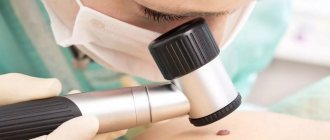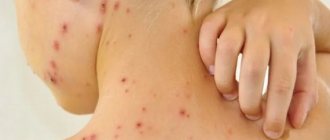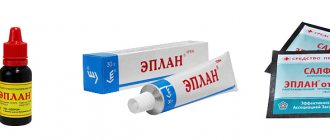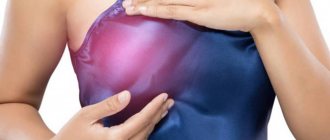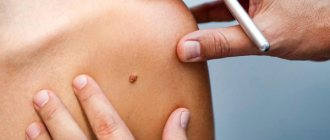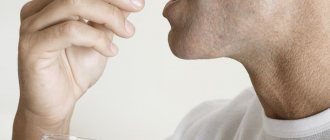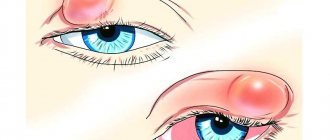Table of contents
- Expression and fine wrinkles
- Uneven skin color
- Wrinkles around the eyes
- Loose skin
- Rosacea
- Post-acne scars
- Changing the contours of the oval face
- Enlarged pores
- Accurate diagnosis of signs of aging and results of aesthetic procedures
- Principles of treatment
The first signs of aging and other aesthetic defects are changes in the structure, color and/or function of a skin area that cause concern to the patient.
In our company you can purchase the following equipment for correcting signs of aging and other aesthetic defects:
- Thermage (Solta Medical)
- Maximus (Pollogen by Lumenis)
- GeneO+ (Pollogen by Lumenis)
- UltraPulse (Lumenis)
- AcuPulse (Lumenis)
- Fraxel (Solta Medical)
- Antera 3D (Miravex)
Causes of defects
Human skin is a very complex system that performs thermoregulatory, excretory, receptor, immune and regulatory functions. It interacts closely with internal systems and reacts to the environment.
By the appearance of the skin you can objectively judge the general condition of the body. Undoubtedly, it also performs an aesthetic function.
To a greater extent, its defects are associated with diseases or precede them. Acquired deficiencies arise from both external and internal causes. The first include mechanical, thermal and chemical factors. This is how keratinization, pigmentation, expansion of vascular walls, dryness, burns and peeling appear.
Solar (senile) lentigo
Widespread hypermelanosis, which occurs due to prolonged exposure to ultraviolet radiation and manifests itself as focal darkening of the skin. In the United States, lentiginous spots affect 90% of fair-skinned people over the age of 60. The changes develop gradually - they accumulate over many years of ultraviolet irradiation of exposed areas of the face and body. A sign of skin aging, lentigo can also occur after regular and/or long-term sessions of visiting a solarium.
Age spots are flat or slightly concave discolorations that are light brown or dark brown. They can often be found on open areas - the face, the backs of the arms and hands, and in the décolleté area ( Fig. 1 ). Single lesions gradually increase in size and merge into larger zones of hypermelanosis. Lentigo after solarium is distinguished by its presence in atypical places that are not subject to active insolation - for example, in the groin.
Senile lentigo can degenerate into lentigo maligna - this happens infrequently, but the possibility of such an event cannot be excluded. Find out more about lentigo and its treatment here.
Rice. 1. Senile lentigo on the arms (Skin Evolutions Clinic)
Fine wrinkles and fine lines are the first sign of aging
Expression wrinkles are bends in the facial skin texture that are visible to the eye; they appear when the superficial muscular aponeurotic system (SMAS) contracts. There are superficial (fine lines) and deep (folds). Fine wrinkles are a reflection of early changes in skin texture - these are small folds that occur due to chrono- and photoaging.
The timing of the appearance of expression lines and fine wrinkles depends on a person’s race and skin phototype, genetics, nutrition, facial activity, geography and other factors. Caucasians are more prone to fine lines and wrinkles, while Asians and African Americans can have smooth skin for a long time. Associated factors are: bad habits, frequency and time spent in the sun or in a solarium, stress, BMI less than 18.5, diseases of internal organs and other factors.
Typically, between 40 and 50 years old, facial wrinkles visible to the eye form, and after 50 years, static wrinkles begin to form - first in the form of fine lines, gradually deepening to large furrows ( Fig. 2 ). Learn more about fine lines and wrinkles and their treatment options here, and about fine lines and treatment options here.
Rice. 2. Medium to large skin wrinkles (Mayo Clinic)
Uneven skin color
Among the causes of this condition, the most important is not skin aging, but a person’s prolonged exposure to the sun or regular visits to solariums. Uneven skin color also occurs when microparticles are deposited in the skin due to environmental pollution, after taking certain medications, with hormonal fluctuations, against the background of chronic inflammation, diseases of internal organs, vascular pathologies, disturbances in the microbial composition of the skin, etc.
Uneven skin color manifests itself as areas of hyper-, hypo- or depigmentation, focal or extensive changes in shade ( Fig. 3 ). Find out more about uneven skin tone and how to correct it here.
Rice. 3. Uneven skin tone due to rosacea (Skin and Lasers Surgery Specialists)
Dry skin - care features
Due to the weak secretion of sebum, pimples and blackheads almost never appear on it. If they do occur, it is usually in the form of isolated rashes. Dry skin has very small pores that are practically invisible, so it does not have an oily sheen.
Its owners, as a rule, need a large amount of moisturizers. After washing, especially with soap, dry skin “tightens.” She is very sensitive and easily irritated by aggressive products or procedures.
Dry skin is susceptible to various dermatological diseases. From frost and heat it becomes inflamed and peels.
Ideal products for dry skin:
- Gentle cleansers that combine cleansing and moisturizing. These can be thicker, creamier formulations or light foaming products.
- Moisturizers that restore and nourish at the same time.
- Non-retinoid anti-aging products containing growth factors and peptides to prevent aging.
Recommended treatments for dry skin:
- Mesotherapy – injections of vitamins and nutritional components. Allows you to fight dryness and prevent early wilting.
- Plasmolifting is the introduction of the patient’s own plasma taken from his blood. It has a regenerating effect and inhibits age-related processes. The procedure makes the skin smoother and healthier.
- Face masks , including water-based ones, have a rejuvenating and moisturizing effect.
- Dysport and Botox will help in the fight against wrinkles. For dry skin, botulinum toxin-based treatments should be started as early as possible to prevent the aging process.
- Restylane, Juvederm and Sculptor fillers will remove wrinkles. With this type of skin, their use should begin at the first signs of aging.
Mesotherapy
Proper care will eliminate dry skin and slow down the aging process.
Wrinkles around the eyes
This is a clear sign of aging of the facial skin around the eyes of varying degrees of severity - from fine lines to large creases. Their main causes are chrono- and photoaging. A significant aggravating factor is smoking, which enhances the destructive effect of matrix metalloproteinases on extracellular matrix proteins (collagen, elastin) and contributes to the earlier appearance of wrinkles around the eyes.
One of the classifications of periorbital wrinkles is the following ( Fig. 4 ):
- Type I - wrinkles extend from the outer edge of the eye to the eyebrow and zygomatic process.
- Type II - wrinkles extend from the outer edge of the eye to the zygomatic process.
- Type III - single wrinkles are limited to the outer edge of the eye.
Find out more about wrinkles around the eyes and how to treat them here.
Rice. 4. Types of periorbital wrinkles (Tamura BM, Odo MY Classification of periorbital wrinkles and treatment with botulinum toxin type A. Surg Cosmet Dermatol 2011; 3(2): 129)
https://www.surgicalcosmetic.org.br - page 131, figure 2
Sources
- Anci E., Braun C., Marinosci A., Rodieux F., Midun E., Torres MJ., Caubet JC. Viral Infections and Cutaneous Drug-Related Eruptions. // Front Pharmacol - 2022 - Vol11 - NNULL - p.586407; PMID:33776753
- Lassi ZS., Padhani ZA., Das JK., Salam RA., Bhutta ZA. Antibiotic therapy versus no antibiotic therapy for children aged 2 to 59 months with WHO-defined non-severe pneumonia and wheeze. // Cochrane Database Syst Rev - 2022 - Vol1 - NNULL - p.CD009576; PMID:33469915
- Marusinec R., Kurowski KM., Amato HK., Saraiva-Garcia C., Loayza F., Salinas L., Trueba G., Graham JP. Caretaker knowledge, attitudes, and practices (KAP) and carriage of extended-spectrum beta-lactamase-producing E. coli (ESBL-EC) in children in Quito, Ecuador. // Antimicrob Resist Infect Control - 2022 - Vol10 - N1 - p.2; PMID:33407927
- Yousif MK. Mothers' false beliefs and myths associated with teething. // Qatar Med J - 2022 - Vol2020 - N2 - p.32; PMID:33329998
- Willems J., Hermans E., Schelstraete P., Depuydt P., De Cock P. Optimizing the Use of Antibiotic Agents in the Pediatric Intensive Care Unit: A Narrative Review. // Paediatr Drugs - 2022 - Vol23 - N1 - p.39-53; PMID:33174101
- Shahrin L., Chisti MJ., Shahid ASMSB., Rahman ASMMH., Islam MZ., Afroze F., Huq S., Ahmed T. Injectable Amoxicillin Versus Injectable Ampicillin Plus Gentamicin in the Treatment of Severe Pneumonia in Children Aged 2 to 59 Months: Protocol for an Open-Label Randomized Controlled Trial. // JMIR Res Protoc - 2022 - Vol9 - N11 - p.e17735; PMID:33136058
- De Wolf D., Genouw A., Standaert C., Victor A., Vanoverbeke N., De Groote K., Martens L. Endocarditis prophylaxis in daily practice of pediatricians and dentists in Flanders. // Eur J Pediatr - 2021 - Vol180 - N2 - p.397-405; PMID:32780192
- de Sá Almeida JS., de Oliveira Marre AT., Teixeira FL., Boente RF., Domingues RMCP., de Paula GR., Lobo LA. Lactoferrin and lactoferricin B reduce adhesion and biofilm formation in the intestinal symbionts Bacteroides fragilis and Bacteroides thetaiotaomicron. // Anaerobe - 2022 - Vol64 - NNULL - p.102232; PMID:32634470
- Basha GW., Woya AA., Tekile AK. Prevalence and risk factors of active trachoma among primary school children of Amhara Region, Northwest Ethiopia. // Indian J Ophthalmol - 2022 - Vol68 - N5 - p.750-754; PMID:32317440
Loose skin
Flabbiness of the skin occurs due to loss of elasticity and changes in the architectonics of connective tissue. These changes appear on any part of the body, but most clearly on the face.
The most important cause of sagging is age-related degradation of collagen and elastin. With aging, collagen fibers lose their ability to create an ordered network, begin to stick together with glucose molecules and form non-stretchable threads. The same thing happens with elastin fibers. Skin sagging is caused by photoaging, inflammasomes, chemotherapy in cancer patients, age-related syndrome due to hormonal changes in the body, micronutrient deficiency, smoking, etc.
Externally, loose skin is characterized by decreased tone, wrinkles, dryness, a tendency to sag, and a pale or yellowish tint ( Fig. 5 ). Find out more about sagging skin and how to correct it here.
Rice. 5. Skin laxity and other signs of aging compared to a youthful face (Health & Heldi)
Cosmetological problems of the face and skin
I can say for sure that there are at least three reasons!
First, there is no system. What does system mean? This is when we take a comprehensive approach to the problem of rashes. When a patient comes to me, I don’t look at a specific pimple and don’t think about what I should put on it to make it go away. I'm thinking about what to do to prevent a person from having these rashes anymore. This is a nutritional correction, this is a home care correction, these are the same procedures. All treatment can only be done in combination!
How many times do I come across the fact that when female patients come to me, I ask them:
Dialogue - Do you often go to cleanses? - Well, yes, about once every two months or once a month - Okay, how do you take care of your face? - Well, I bought something myself... — They did so many cleanings for you and weren’t you prescribed care? - No, no one prescribed care for me...
Initially, this is a flawed approach to working with a problem face, because in addition to procedures, there must be a system of facial skin care. I'm not even talking about the examination and the rest.
The second reason is the frequent change of doctors. In fact, people with problem skin (I learned this from my practice) are very emotional and labile, they take everything very seriously, they want to solve their problem as quickly as possible. It is really very difficult, emotionally, to see terrible rashes on your face every day.
And of course, when a patient comes to a cosmetologist, he expects some quick results. The doctor cannot immediately give quick results; moreover, sometimes the first steps in treatment can aggravate the process and the person gets upset, gives up everything halfway, waits two or three months and then goes to another doctor. The next doctor starts all over again and everything from scratch.
Understand that when you change doctors constantly, you are harming yourself first of all. Acne treatment cannot be quick; the effect cannot appear in a month, especially with severe acne. An examination and treatment adjustment is required. It also happens that we sometimes change medications during the treatment process.
First of all, you need to find a cosmetologist who will give you a certain level of trust and answer your questions in detail. Find a cosmetologist who will not evade answers. And only if you trust, start your treatment with this doctor. This is probably the best option! And if you change doctors like gloves, you will be treating your acne for 15 years, until it goes away on its own.
The third point is ignoring the cosmetologist’s prescriptions. I can prescribe everything for examinations, home care, procedures... But, for some reason, a person decides not to do something. Or the appointment sheet has been collecting dust on the shelf for 5 months. The examinations that need to be taken have not been completed: blood and urine tests. Purchased care just sits at home and is not used for some reason. Procedures are skipped.
Well, what can we say in this case?
Treatment? This is not a treatment! You just went, spent time and money and in the end nothing! If you are prescribed something, then please do it! If you have any questions about treatment - ask! It often happens that I am prescribed a drug and then the patient calls me and asks: “But I read on the Internet that this drug causes so many complications! Well, it's just creepy! And you can’t get pregnant after 3 years and my hair will all fall out and I’ll be covered all over with pigmentation!!!” The Internet is the doctor of all Rus'! What can I say?
Yes, there are a lot of negative reviews on drugs, I understand! Yes, you can read, it is logical that if you are looking for something, if you doubt some points about the prescriptions, ask your doctor this question after you have read this! The doctor will explain everything to you in detail - he will tell you everything. If you still have questions, this is a separate topic! And if you interrupt treatment simply because you read something negative and did not give feedback to your cosmetologist! Well, excuse me, no treatment!
The next doctor will prescribe the same thing for you, you will read it again on the Internet and, strictly speaking, the acne treatment will end there. Therefore, give feedback to the cosmetologist and do everything that a competent doctor prescribes for you. He will always guide you in the right direction and will definitely help cure acne.
Very often, prescriptions for drugs such as antibiotics are scary. Systemic antibiotics - taken orally. The prescriptions for combined oral contraceptives and retinoids are scary, and in that order they are scary! The worst ones are retinoids. You must understand that for each acne disease (moderate and severe) there is its own treatment.
When you have pneumonia and you are in the hospital with a temperature over 40, you don’t set conditions for the doctor, like, I want this antibiotic or I want Grandma Agafya’s poultice. You will be prescribed an antibiotic, you want to survive and you allow yourself to be given this antibiotic. It's the same with acne. Yes, this is not a life-threatening condition, I agree. But you must understand that for each degree of severity of the condition, there is a specific treatment.
I can try to cure severe acne by cleansing, but I think you understand perfectly well that this will lead to no result. I can try to cure severe acne with some kind of ointment. Yes, you will feel better, it will definitely make you feel better. Will there be a result? No, there will be no result!
Therefore, here you can be afraid! But, you need to ask questions to the doctor! He will answer and you will already be thinking whether or not to decide in favor of the drugs that the doctor prescribes for you.
You must understand that in this case of your choice, you take responsibility for the fact that the result will come very slowly, or it will not come at all. Reason: You did not follow the recommendations of the attending cosmetologist (dermatologist).
Rosacea
This sign of aging is characterized by facial flushing, telangiectasias, rough skin, and inflammatory papulopustular changes.
The exact pathogenesis of the disease has not been studied: the role of heredity, skin microbiome, dysregulation of the immune system, and abnormal signal transmission to nerves and blood vessels has been suggested. An important aspect of rosacea are triggers - provoking factors, which are individual for each person and are determined experimentally.
During attacks of rosacea, a person experiences erythema on the face, sometimes with telangiectasia. Over time, inflammatory papules and pustules appear in the area of the nose, forehead and cheeks ( Fig. 6 ); rhinophyma, conjunctival vascular injection, chalazion and episcleritis may appear. Learn more about rosacea and its treatment options here.
Rice. 6. Rosacea with inflammatory elements on the cheeks (Danish national service on dermato-venereology)
Dark skin - care features
Its owners produce melanin pigment in sufficient quantities, so sunburn practically does not occur on dark skin. Wrinkles appear on it quite late, but when they appear, the face immediately looks tired.
Features of dark skin:
- Pigment problems. Dark spots from acne, scars and scratches often remain on the face and décolleté. During pregnancy, dark-skinned women often develop age spots that do not go away.
- Dark skin, like all other skin types, can be oily, sensitive, dry or even prone to rosacea, and therefore needs care.
Recommended procedures:
- Chemical peeling to lighten and even out skin tone. The procedure must be performed by a very experienced specialist. Too much exposure will cause age spots to appear.
- Dysport or Botox and fillers based on hyaluronic acid and other components. For dark skin, these medications are as necessary as for other types.
If you have skin problems, such as clogged pores and inflamed areas, additional cosmetic procedures will be needed.
Post-acne scars
These are skin changes in areas where acne inflammatory elements are healing, associated with the formation of connective tissue. The vast majority of post-acne scars appear on the site of papules and pustules; much less often they occur in the area of comedones.
If the skin is damaged at the level of the papillary dermis, recovery can occur without gross defects - only depigmented areas with focal atrophy remain. With complete destruction of the basement membrane, a scar is formed ( Fig. 7 ) with the growth of coarse fibrous collagen, deformation of blood and lymphatic vessels. If collagen synthesis exceeds its destruction, the scar becomes hypertrophic - it bulges above the skin. If fibroblast activity becomes excessive, a large keloid develops due to tumor-like proliferation of immature connective tissue.
There are no post-acne scars:
- Hypertrophic.
- Keloids.
- Atrophic:
- chipped (icepick scars);
- rounded (rolling scars);
- rectangular (boxcar scars).
About half of acne scars disrupt the structure and/or function of the skin. They disfigure the patient’s face, negatively affect his emotional state and self-esteem, and can provoke psychological disorders and complexes about his appearance.
Find out more about acne scars and their treatment methods here.
Rice . 7 . Chip atrophic post-acne scars (Danish national service on dermato-venereology)
Changing the contours of the oval face
The gradual loss of an even facial contour is one of the first signs of skin aging and is usually observed in men and women after 45–55 years. The main reason for changes in facial contours is aging.
With age, the quality of the skin gradually deteriorates, the ligamentous apparatus of the muscular aponeurotic layer weakens, the volume decreases and redistribution of subcutaneous adipose tissue occurs in the middle and lower third of the face, and bone tissue is resorbed. Outwardly, this is manifested by a violation of the clear line of the oval of the face, loss of volume in the cheek-zygomatic region, the formation of deep nasolabial folds and “marionette lines”, drooping of the corners of the lips, and deepening of the chin fold. The face begins to look loose ( Fig. 8 ).
Find out more about changing the contours of the oval of the face and methods of non-surgical correction here.
Rice. 8. Changing facial contours over time (Pinterest
Age-related skin changes
From the moment a person is born, his skin begins to undergo age-related changes. Let's look at several stages that have specific age-specific characteristics.
Newborn skin
In newborns, the skin is covered with a curdled, cheese-like lubricant - vernix caseosa, consisting of fat, glycogen, extractives, salt and cholesterol, odorous and volatile acids and vitamins. After a few days it disappears due to swaddling and drying.
Due to the first irritation in their life from environmental actions, the so-called erythema of newborns , or physiological catarrh of the skin. It becomes hyperemic - bright red, sometimes with a bluish tint. After two or three days, the hyperemia gives way to peeling, especially pronounced on the palms and soles. This is a kind of chemical peeling!
Baby skin
The progression of age-related changes takes its course. The skin becomes thicker, its protective functions gradually become more advanced. Nevertheless, a child’s skin retains a number of differences:
- The epidermis (outer layer) is thinner and the cells are much smaller. Irritation develops more easily.
- The density of sweat glands is 5-7 times higher than in adults. At the same time, the thickness of subcutaneous fat is lower. Hence, less perfect thermoregulation, a greater tendency of children to hypothermia or overheating.
- A larger specific amount of sebaceous glands leads to the fact that children's skin is more often of the oily type than dry.
- The ability to form melanin is lower than that of an adult and therefore babies are so helpless in relation to the action of ultraviolet rays.
Girl/boy skin
At this age, the final formation of the skin occurs, and although there are no age-related changes yet, other troubles come to the fore: the skin is unpleasantly shiny, the pores are clogged, which is typical not only for the skin teenagers, but also for the skin of girls . Thus, the main problem for both boys and girls during puberty is acne (adolescent acne). Here it may turn out that as hormonal changes are completed, acne will fade away, gradually disappear by the age of 25-30, and, perhaps, you will have to be treated comprehensively and for quite a long time, but almost always with victory at the finish line; The main thing is to consult a doctor in time. And it should be remembered that in addition to a temporary cosmetic defect, acne can seriously affect the immature psyche of a teenager, and also, in severe cases, lead to irreversible or rough scars that are difficult to correct.
In addition, from the onset of puberty until adulthood, under the influence of female sex hormones, there is a gradual change in the percentage of of ceramides (ceramides). Since ceramides, among other things, play an important role in the formation of the skin barrier, which controls transepidermal water loss (TEL), the functioning of this barrier can be significantly influenced by hormonal levels.
Skin of a young woman - over 30 years old
After a short period of flourishing female beauty, when the unpleasant acne has already passed, the first signs of age suddenly begin to appear. This is not aging yet, but already the beginning of fading. What changes happen after 30?
- Predominance of the stratum corneum of the epidermis.
- The rate of division of basal cells decreases, the basal layer becomes thinner, while the thickness of the stratum corneum, on the contrary, increases. This process causes the skin, especially dry skin, to become parchment-like.
- Reduced production of collagen and elastin fibers, their degenerative changes.
- Scientists have found that starting from the age of 30, collagen synthesis decreases by 1% per year. At the level of the dermis, collagen and elastic fibers thicken, their arrangement becomes more chaotic, and the process of their regeneration slows down. The skin loses its elasticity .
- Microcirculation disorder leads to deterioration of complexion.
- A gradual breakdown of microcirculation leads to a decrease in trophism (nutrition), which in turn starts a vicious circle of accelerating the aging process. In addition, reduced blood supply simply leads to a deterioration in complexion.
- Muscular dystonia is a disorder of muscle tone, especially the muscles of the face and neck.
- The muscles of the forehead and chin shrink, forming deep transverse and longitudinal wrinkles. The muscles of the cheek area, on the contrary, sag, causing drooping of the corners of the mouth and deformation of the oval of the face.
Sex differences
It is interesting to note a number of gender differences - the difference in the properties and structure of the skin between men and women. The specific density of collagen, which characterizes the “laying” of fibrils in the dermis, is significantly lower in women at almost any age than in men. This is due to the influence of androgens, so men are luckier in this case - they seem “younger” than their peers of the opposite sex.
Also, there are gender differences in the thickness of subcutaneous fat, as well as in the structure of its distribution among parts of the body (the so-called female and male body type).
Sensitivity to pain in women, despite popular belief, is significantly higher than in men, which is associated with the thinner thickness of women's skin.
Thanks to the female sex hormones estrogen, the skin becomes more elastic and firm. With a sharp jump in weight, total sagging of the skin does not occur. And the lack of estrogen threatens excessive hair growth of the skin, the color becomes pale with a grayish tint.
Features of the skin of a woman over 40 years old
The processes of physiological age-related changes in the skin described above are increasing. There is a process of involution - “reverse” development, age-related dystrophy. There is a decrease in the thickness of the epidermis, hypodermis, and the length of long hair follicles, and atrophy of small sebaceous glands begins. Collagen fibers thicken, connective tissue degeneration occurs; Some of the fibers stick together or fall apart. The amount of mucopolysaccharides in the skin decreases, which leads to its dehydration.
External manifestations of age so far become noticeable only in those zones where several predisposing and unfavorable factors are summed up at once.
Thus, crow's feet appear in the corners of the eyes. This is due to the fact that the skin around the eyes is three to four times thinner than in other areas of the face, there is a minimal layer of hypodermis under it, there are few sebaceous glands in this area, the secretions from which protect the skin from harmful environmental factors, little elastin and collagen fibers Well, in addition, due to facial movements, the skin around the eyes is subject to constant mechanical deformation. All this leads to the fact that the first “age-related” worries in the mirror arise about the skin around the eyes.
Other “problem” age areas:
- nasolabial fold - its depth and “expressiveness” gradually increases.
- skin of the eyelids - there is an excess of it, the skin becomes heavier, folds appear on the eyelids.
- neck skin - the first familiar wrinkles and folds of skin on the neck appear, and with excess weight, a “double chin”.
In addition, many women experience problems related to hormonal status, for example, hair growth on the upper lip. Microcirculatory disorders lead to vascular appearances - rosacea, spider veins and telangiectasias.
Skin of a woman over 50 years old
The increase in skin aging processes becomes avalanche-like and is associated with the general condition of the body. At the pathophysiological level, the following changes occur in the skin:
- thinning of the skin,
- reduction of subcutaneous fat on the face, cheeks and neck with its simultaneous thickening on other parts of the body,
- reduction in the amount of mucopolysaccharides in the dermis,
- collagen degeneration,
- decreased blood supply to the skin
- change in skin type towards dry, sometimes even “parchment”
- significant slowdown in regeneration processes
- increase in pH - shift to the alkaline side
- decrease in barrier properties.
One of the most significant factors leading to external changes in the skin in this period of life is the age-related hormonal changes of a woman - menopause.
Estrogen inhibits the secretory activity of the sebaceous glands, increases the content of hyaluronic acid, converts collagen into an insoluble form, and is involved in the regulation of melanogenesis. A decrease in the level of estrogen in the blood leads to the fact that the oiliness of the skin decreases, it becomes dry and thin, like parchment, its hydration decreases and elasticity, age spots appear.
Below is a list of external manifestations - the most characteristic (more than 10%) skin changes in women by the age of fifty (the list is sorted by frequency of occurrence):
- Circles under the eyes
- Horizontal wrinkles on the forehead
- Vertical glabellar wrinkles
- Wrinkles under the eyes
- Drooping of the upper eyelid
- Hair growth above the upper lip
- Bags under the eyes
- Telangiectasia
- Pronounced deep nasolabial folds
- Crow's feet in the corners of the eyes
- Senile lentigo (senile “freckles”)
- Radial wrinkles around the lips
- Double chin
- Increased hair growth on the cheeks and chin
- Sagging skin with changes in facial ovalTypes of st
Causes of premature aging of facial skin:
- Unfavorable environmental conditions, when polluted, insufficiently humid air and wind contribute to clogged pores, inflammation, and metabolic disorders.
- Lack of moisture, which changes the structure of the skin. The deficiency cannot be eliminated by drinking, since cosmetics are needed to retain water molecules.
- Bad habits - smoking, alcohol, drugs as a source of toxins. The resulting toxic compounds destroy cells, promote the formation of free radicals, and provoke nutritional deficiency.
- Lack of nutrients and vitamins - participants in metabolic, oxidative, reduction processes, and immune reactions.
- Stress and a busy life schedule, a tendency to workaholism.
- Active facial expressions are the habit of wrinkled nose, forehead, and eyebrows.
- Improper care, causing loss of moisture, inflammation, and with early use of age-related cosmetics - disruption of skin functions.
- Sleep less than 7 hours a day, which is why tissues do not have time to renew themselves.
Types of facial skin aging and their characteristics
Despite the fact that everyone’s face ages, it happens differently. One of several aging scenarios is being realized. What it will be like depends on your skin type, as well as your body type, face shape, and health status.
Tired
This type of aging is typical for those with normal and combination skin, with an average degree of development of subcutaneous fat and muscles. They have a thin or normal build and a diamond-shaped or oval face.
Fatigue aging is accompanied by the following phenomena:
- complexion becomes dull;
- muscle tone and turgor decrease;
- pastiness develops and volume is lost;
- the corners of the mouth and eyes droop;
- a tear trough appears and the nasolabial fold deepens.
Pastosity is an unexpressed swelling or pre-edema state, which is accompanied by a decrease in elasticity and a feeling of doughiness when pressed. In the morning the face is fresh, but by the end of the day it takes on a sad or sad expression.
The “tired” type of aging is considered favorable; it easily responds to procedures.
finely wrinkled
This is how thin women with dry skin and poor development of the subcutaneous fat layer age. As they age, they experience:
- moisture deficiency;
- wrinkles around the mouth, eyes, forehead;
- drying out of the face like a baked apple.
The advantage of this development is that due to the absence of a fat layer on the face there is no ptosis (sagging), so the oval contour is preserved for a long time.
Deformation
It occurs in dense people with a full face, who have combination or oily skin, with a well-developed layer of subcutaneous fat. Often such women suffer from venous insufficiency, so they are characterized by facial redness and rosacea.
Signs of this type of aging:
- “creeping” oval of the face;
- jowls (sagging skin in the area of the lower jaw and neck);
- formation of a double chin;
- bags under the eyes;
- edema;
- nasolabial folds;
- “marionette lines,” which run from the corners of the mouth to the chin, giving the face a sad or stern look.
The lower third of the face suffers the most.
Combined
This type of aging combines all the phenomena described above. It is typical for normal or slightly overweight people with combination skin. Small wrinkles appear in “dry” areas, and where fatty tissue is developed, pastiness appears.
The combined type is the most complex, but at the same time the most common.
Muscular
This is how the face of women of Asian origin changes with age, who have well-developed muscle muscles as opposed to a layer of fat. The face looks young for a long time, the oval remains clear, wrinkles do not bother you over the years.
Age-related changes occur rapidly, within one to two years, due to weakening of muscle tissue. Creases appear, deep wrinkles appear, and the upper eyelid droops.
This is the final stage, which occurs in everyone after 75 years of age. At this stage, the signs listed above appear.
Is it possible to prolong youth?
The answer is yes. It is enough to follow simple rules from an early youth:
- Protect yourself from the sun's rays - both with wide-brimmed hats and cosmetics with light filters, and wear sunglasses.
- Do not smoke or abuse alcohol, give up drugs.
- Include fresh vegetables and fruits, seafood in your diet, reduce the amount of sugar, simple carbohydrates, and cholesterol.
- Maintaining normal weight, fluctuations are also undesirable.
- Sleep at least 7 hours.
- Avoid stressful situations.
- Take vitamin complexes, but only after visiting a doctor who will determine the body's needs.
- Exercise in moderation.
- Do gymnastics and facial massages.
The cosmetologist will select care, taking into account the types of facial skin aging and the problems that need to be solved. How can a cosmetologist help, in what ways?
Rejuvenation techniques.
Fortunately, a beautiful, good-looking woman over forty is no longer a miracle, but rather the norm. A healthy lifestyle, proper nutrition, getting enough sleep, vitamin therapy and, of course, the achievements of modern medicine and cosmetology help to achieve this.
Miguel Cervantes said: “It is a sin if a woman looks less beautiful than she could be.” Nowadays this expression is especially relevant, because... So many tools and techniques have been created to maintain and improve female beauty that it’s really a sin not to use them!
Botox injections
The use of Botox for rejuvenation has been used for quite some time, its effectiveness and safety have been proven. More often it is used to correct aesthetic problems of the upper part of the face. This procedure will help remove facial wrinkles on the forehead, on the bridge of the nose, in the corners of the eyes, above the lips.
Mesotherapy
For this procedure, various compounds and extracts are used, which are selected depending on the needs of the skin and are administered intradermally. Facial mesotherapy is quite effective and popular - it can be used to fight age spots, wrinkles, sagging skin, puffiness under the eyes, scars and stagnant spots from acne, rosacea.
Biorevitalization
Another procedure that is based on injections of hyaluronic acid-based drugs directly into the skin. This procedure helps restore skin elasticity, increases skin resistance to external influences, restores its water balance and physiological processes within the skin, and helps restore collagen production.
Biorevitalization helps prevent the appearance of pronounced signs of aging; it is indicated both at a young age and at a more mature age for more effective rejuvenation.
RF lifting
For those who prefer rejuvenation without needles and injections, the RF lifting procedure is perfect. It is based on the use of radio frequency radiation, which affects the deep layers of the epidermis. This procedure works great on the areas around the eyes, on the cheekbones and cheeks, on the chin and neck, on the forehead - in short, on all problem areas.
With the help of thermolifting, you can quickly restore skin tone, remove sagging, and tighten wrinkles. It is recommended for skin rejuvenation after the age of 35. The procedure is completely painless, does not require a recovery period, and is well tolerated.
Fractional laser rejuvenation
This is a fairly new procedure, also aimed at rejuvenating the skin and eliminating defects. Fractional laser rejuvenation helps to significantly improve the appearance of the skin, get rid of wrinkles and age spots, tighten the skin and improve its texture.
Photorejuvenation
The photorejuvenation procedure makes it possible to get rid of age-related skin changes and delay their appearance. This method gives a long-lasting, sustainable result when used systematically over a course. Positive changes are noticeable after the first procedure.
A cosmetologist has many more interesting and effective things in his arsenal, visit him and stay young and beautiful as long as possible.
Dermatovenerologist of the outpatient dermatovenerological department No. 3 of the health care institution “City Clinical Dermatovenerological Dispensary” Gapanovich Ekaterina Vyacheslavovna, tel. 8-029-772-58-49.
Enlarged pores
They are expanded recesses of the skin, which are the mouths of the hair follicles and at the same time openings for removing the secretions of the sweat and sebaceous glands. Pores become visible to the eye with a diameter of 250–500 microns or more.
The main cause of enlarged pores is sagging skin. As we age, the main connective tissue proteins (collagen and elastin) begin to degrade, causing the skin to gradually sag and pores to enlarge. Excessive synthesis of sebum plays a certain role, which accumulates in the pores along with horny scales and dirt particles, causing them to swell and become visible. One of the reasons for enlarged pores is the “love of peelings.” Repeated application of chemical peels is accompanied by an inflammatory reaction that does not have time to subside, leading to changes in the dermal layer of the skin and enlargement of pores.
Enlarged pores appear as visible crater-shaped depressions on the skin, round or irregular in shape ( Fig. 9 ). There is a tendency for their number to decrease with age.
Find out more about enlarged pores and how to correct them here.
Rice. 9. Enlarged pores on the cheeks and nose (Only m health)
Oily skin - how to properly care for it
Thanks to the increased secretion of sebum, oily skin does not age for a long time. Wrinkles appear on it quite late. Another advantage is reduced sensitivity. Those with oily skin can more easily tolerate more aggressive cosmetic procedures, such as deep peels, without the risk of irritation.
The main problems that arise in owners of such skin are acne, increased oiliness, enlarged pores, and blackheads.
Pimples
Products for oily skin:
- Cleansers with glycolic and salicylic acid - reduce sebum production, remove acne and reduce pores.
- Cosmetic products with vitamin A - normalize the functioning of the sebaceous glands, improve the color and appearance of the face.
- Antioxidant serums – prevent aging.
- Light moisturizing creams and cosmetics with hyaluronic acid - moisturize without adding grease or clogging pores.
Recommended treatments for oily skin:
- Laser procedures have a bactericidal effect and prevent acne.
- Chemical peels – remove age spots, acne, and reduce sebum production.
- Cosmetic cleansing – eliminates acne, clogged pores, blackheads, which often form on such skin.
- Dysport/Botox fillers – remove wrinkles and dark circles under the eyes, making the oval of the face better defined.
Chemical peeling
Proper care will remove oily shine from the skin, tighten pores and avoid the appearance of acne.
Accurate diagnosis of signs of aging and results of aesthetic procedures
Accurate diagnosis and reliable confirmation of the results of aesthetic interventions are coming to the fore today. This approach to assessing the signs of skin aging allows not only to make a correct diagnosis, but also to document the results of the procedure, which is significant evidence of the success of the cosmetologist. To do this, you can use a three-dimensional modeling system - for example, Antera 3D .
Antera 3D consists of a high-definition camera with a special housing that blocks outside light from entering the shooting field. There are LEDs around the camera lens; when shooting, they turn on alternately, illuminating the skin in different spectral ranges. In a few seconds, more than a hundred photographs are taken in different lighting conditions, from which a computer algorithm models a three-dimensional photo.
Features of the Antera 3D three-dimensional modeling system :
- Skin texture - the degree of uniformity and smoothness.
- Wrinkles - linear dimensions, depth, severity index.
- Hypertrophic scars - volume, area.
- Deep wrinkles and furrows - precise localization, depth measurement.
- Skin neoplasms - volume, area, shade.
- Pores - number, severity index.
- Melanin - uniform distribution, skin tones.
- Hemoglobin - uniformity of distribution, content in the skin.
Several versions of Antera 3D allow you to choose the tool that suits a particular specialist.
Do I need to take care of normal skin that does not have problems?
Of course, it is necessary, since it is also subject to the aging process. In this case, there are no special recommendations - everything is determined by the condition of the skin, age and other factors.
The main thing is not to delude yourself that healthy skin itself will always look great. She also needs peelings to remove dead particles, beauty injections and Botox to eliminate wrinkles. Other care procedures will also be useful. Protection from ultraviolet rays and frost, adequate nutrition and hydration are also required.
Healthy, beautiful skin is a gift given by nature. Therefore, it must be preserved and increased.
There is no one-size-fits-all approach to skin care. What works perfectly in one case may not work at all in another. Even having accurately determined your skin type, before using any cosmetic products or undergoing procedures, you must consult a cosmetologist at the Center for Aesthetic Medicine. This will allow you to make the right choice.
